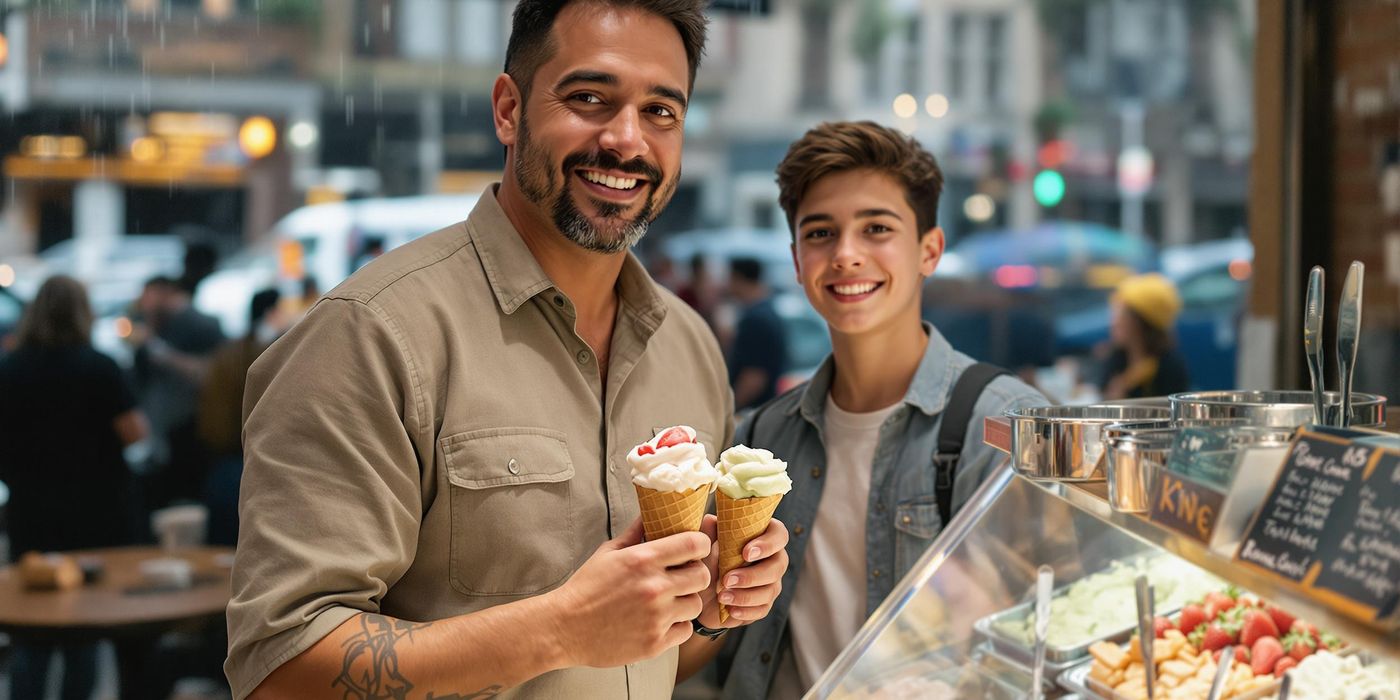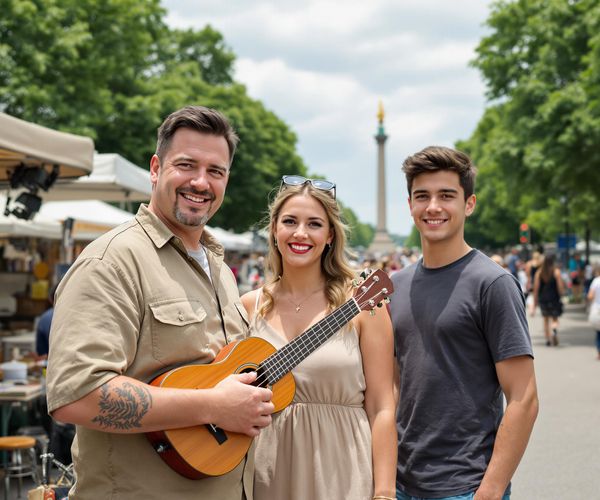Aloha, fellow travelers! Walter Keahi here, your friendly cultural consultant and travel enthusiast. As someone who grew up immersed in the rich traditions of Hawaii and now lives in the vibrant city of Berlin, I've learned a thing or two about blending cultural exploration with the simple joys of family travel. Join me as we explore how to create unforgettable family vacations that are both educational and endlessly fun.
Planning with Purpose: Setting the Stage for Cultural Discovery
Before you even pack your bags, the adventure begins! Planning a family trip with a focus on culture should be a collaborative effort. Get everyone involved in the research process. This not only builds excitement but also ensures that everyone has a vested interest in the journey.
For younger children, age-appropriate resources like illustrated books and engaging documentaries can spark their curiosity. Teenagers might enjoy exploring interactive websites or following travel blogs that highlight cultural experiences. For example, when we were planning a trip to Kyoto, Japan, my son Kai devoured manga about samurai and geishas, which gave him a great foundation before we even arrived.
One of the most impactful things you can do is learn a few basic phrases in the local language. Even simple greetings like “hello,” “thank you,” and “please” can go a long way in showing respect and enhancing your interactions with locals. It demonstrates a genuine interest in their culture and opens doors to more meaningful connections. Trust me, a heartfelt “Danke” in Berlin or “Grazie” in Rome will be met with smiles and appreciation.
Furthermore, understanding local customs and etiquette is crucial. Researching appropriate attire for visiting religious sites, knowing how to properly use chopsticks in Japan, or understanding the significance of afternoon tea in England can prevent unintentional cultural faux pas. This knowledge ensures respectful and meaningful experiences for everyone.
Crafting an Itinerary That Educates and Entertains
The key to a successful family trip is finding the sweet spot between cultural landmarks and kid-friendly attractions. Select destinations that offer a diverse range of experiences to cater to everyone's interests. Rome, for instance, boasts ancient ruins like the Colosseum and Roman Forum, but also has fantastic gelato shops and beautiful parks where kids can run around and burn off energy. {image1}
Balance structured activities with unstructured playtime. Museum visits and historical site tours are essential, but so is allowing time for spontaneous exploration. Let the kids wander through local markets, play in parks, or simply observe daily life. These moments often lead to the most unexpected and memorable discoveries. On a trip to Marrakech, Morocco, we spent hours getting lost in the souks, haggling for souvenirs and sampling local delicacies. It was chaotic, but also incredibly rewarding.
Don't forget to incorporate cultural performances, local festivals, and traditional crafts into your itinerary. Attending a traditional Hawaiian luau, watching a flamenco show in Spain, or participating in a pottery workshop in Mexico can provide immersive and hands-on learning experiences. Check local event calendars for festivals or celebrations that coincide with your trip.
Most importantly, be flexible! Things don't always go according to plan, especially when traveling with kids. Embrace the unexpected and allow for spontaneous detours. Sometimes, the best travel memories are made when you veer off the beaten path and discover hidden gems. Remember that time we missed our train in Florence and ended up stumbling upon a charming little trattoria where we had the best pasta of our lives?
Engaging Kids Actively: Making Culture Come Alive
Turn your travels into interactive adventures! Scavenger hunts at historical sites are a fantastic way to keep kids engaged and learning. Create a list of things to find or questions to answer as you explore. Cooking classes featuring local cuisine are another great option. Not only will you learn to prepare delicious dishes, but you'll also gain insights into the culture and traditions surrounding food. My son still talks about the pasta-making class we took in Italy!
Encourage hands-on experiences. Trying on traditional clothing, learning local dances, or participating in community events can create lasting memories. In Kyoto, we rented kimonos and strolled through the Gion district, feeling like we had stepped back in time. These types of immersive experiences make culture come alive in a way that textbooks simply can't.
Storytelling and folklore are powerful tools for engaging kids with culture. Share local legends and myths, or read aloud from children's books that feature traditional stories. Many cultures have rich oral traditions, and listening to these stories can provide a deeper understanding of their values and beliefs. {image2}
Finally, encourage your kids to interact with local children and families. Whether it's playing a game of soccer in a park or striking up a conversation at a local market, these interactions can foster cross-cultural understanding and break down barriers. Learning about different cultures isn't just about visiting museums and monuments; it's about connecting with the people who call these places home.
Sustaining the Learning: Reflecting and Reinforcing Cultural Insights
The learning doesn't have to end when you return home. Encourage your family to keep a travel journal or scrapbook to document their experiences and observations. This is a great way to reflect on what you've learned and preserve those precious memories. Include photos, ticket stubs, and other mementos to create a lasting record of your travels.
Have post-trip discussions about cultural differences and similarities. What surprised you? What did you learn? What did you find interesting or challenging? These conversations can help solidify your understanding of the culture and promote critical thinking. Compare and contrast the cultures you've experienced with your own, identifying both commonalities and differences.
Create a family presentation or share photos and stories with friends and relatives. This is a fun way to relive your adventures and share your newfound knowledge with others. You could even host a themed dinner, preparing dishes from the cultures you've explored. Sharing your experiences can inspire others to travel and learn about the world.
Continue learning about the culture through books, movies, music, and online resources. Visit museums and cultural centers in your own community, attend cultural festivals, or take language classes. The possibilities are endless! By continuing to explore and learn, you can keep the spirit of travel alive and deepen your understanding of the world.
So there you have it – my guide to balancing culture and fun on your family travels. Remember, the goal is not just to see the world, but to understand it. By embracing cultural immersion, you can create meaningful experiences that will enrich your lives and broaden your horizons. A hui hou (until we meet again)!
Explore how to create memorable family vacations that blend cultural exploration with fun activities. Tips for balancing cultural landmarks and kid-friendly attractions.









